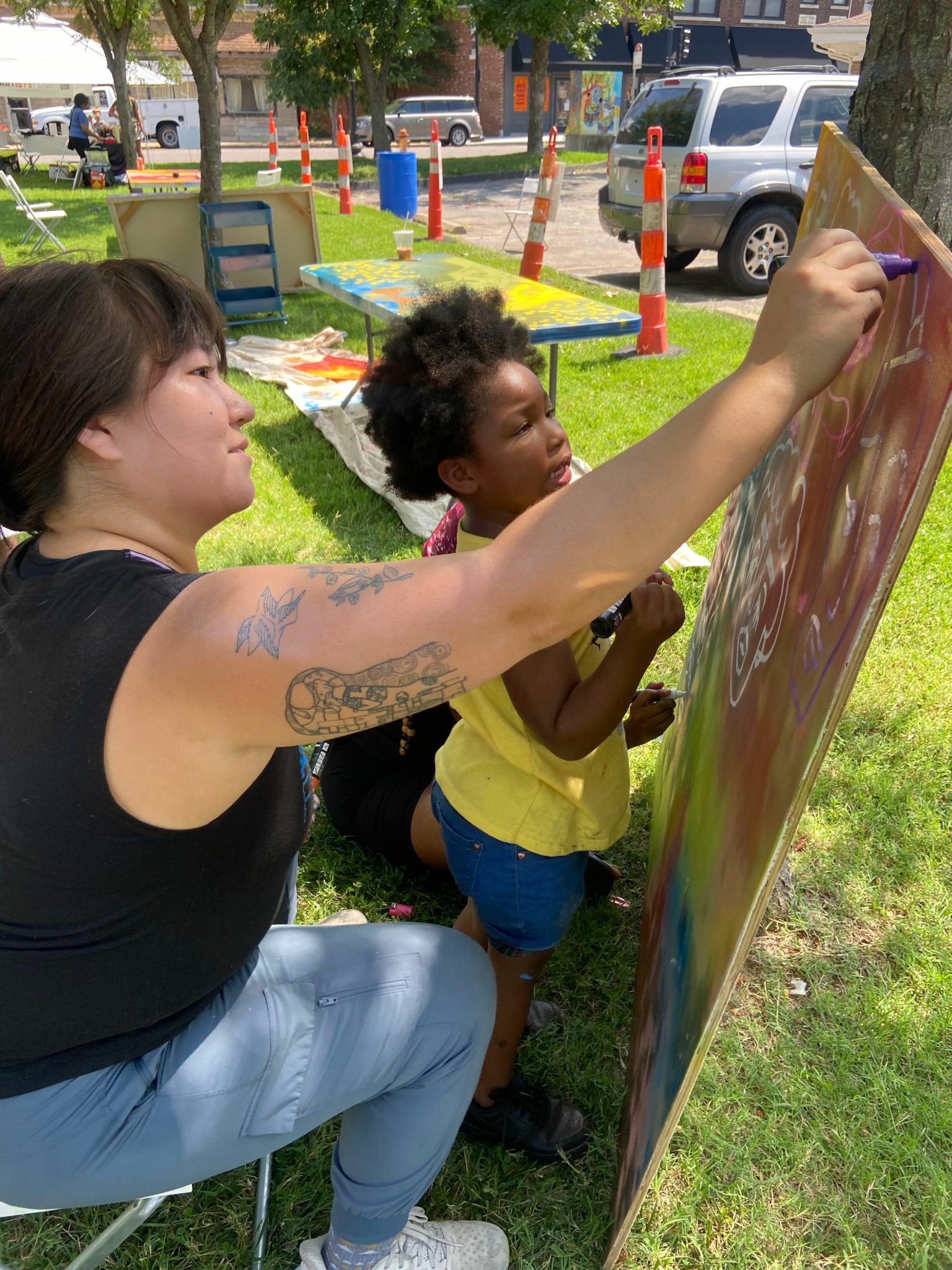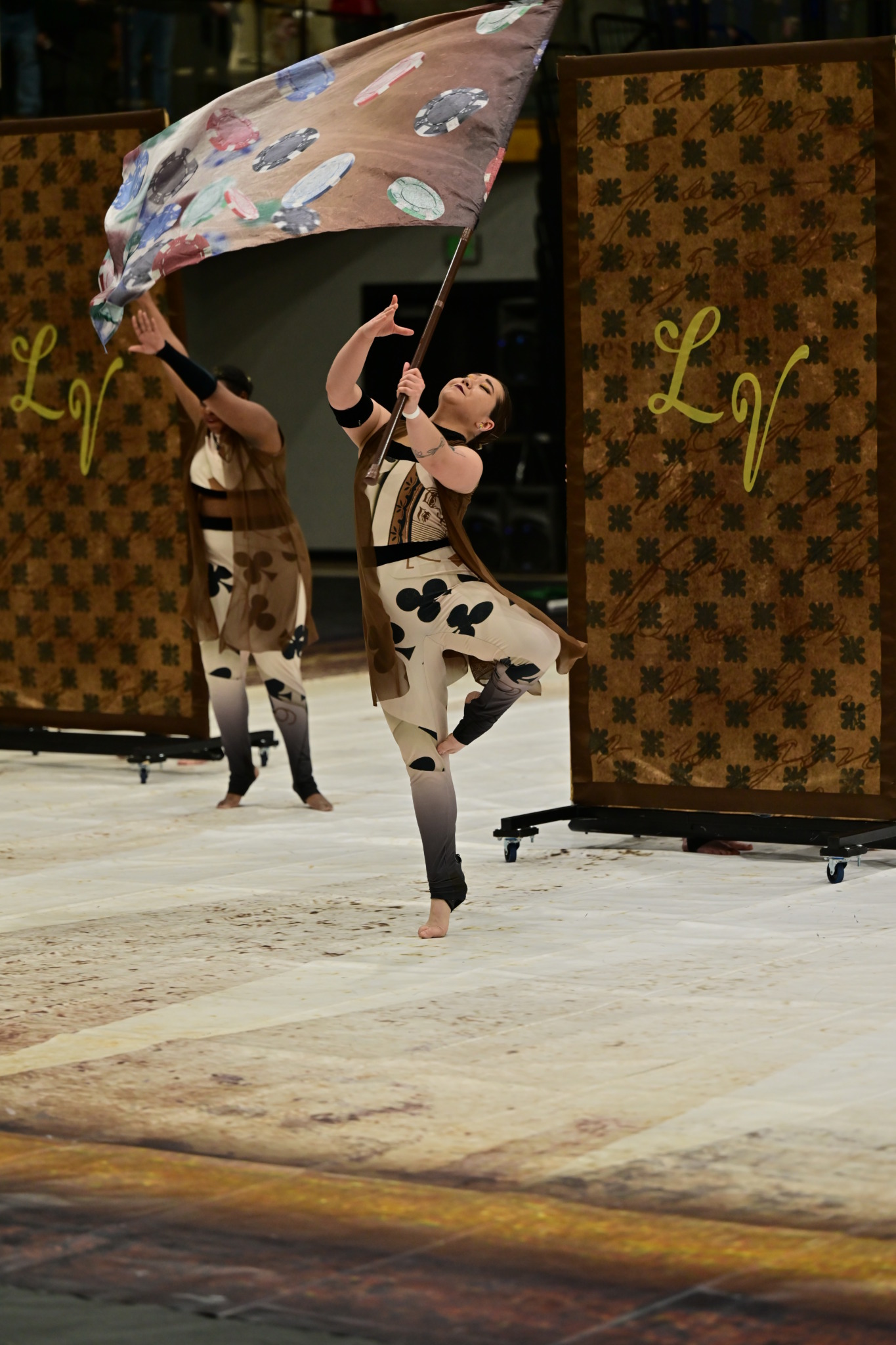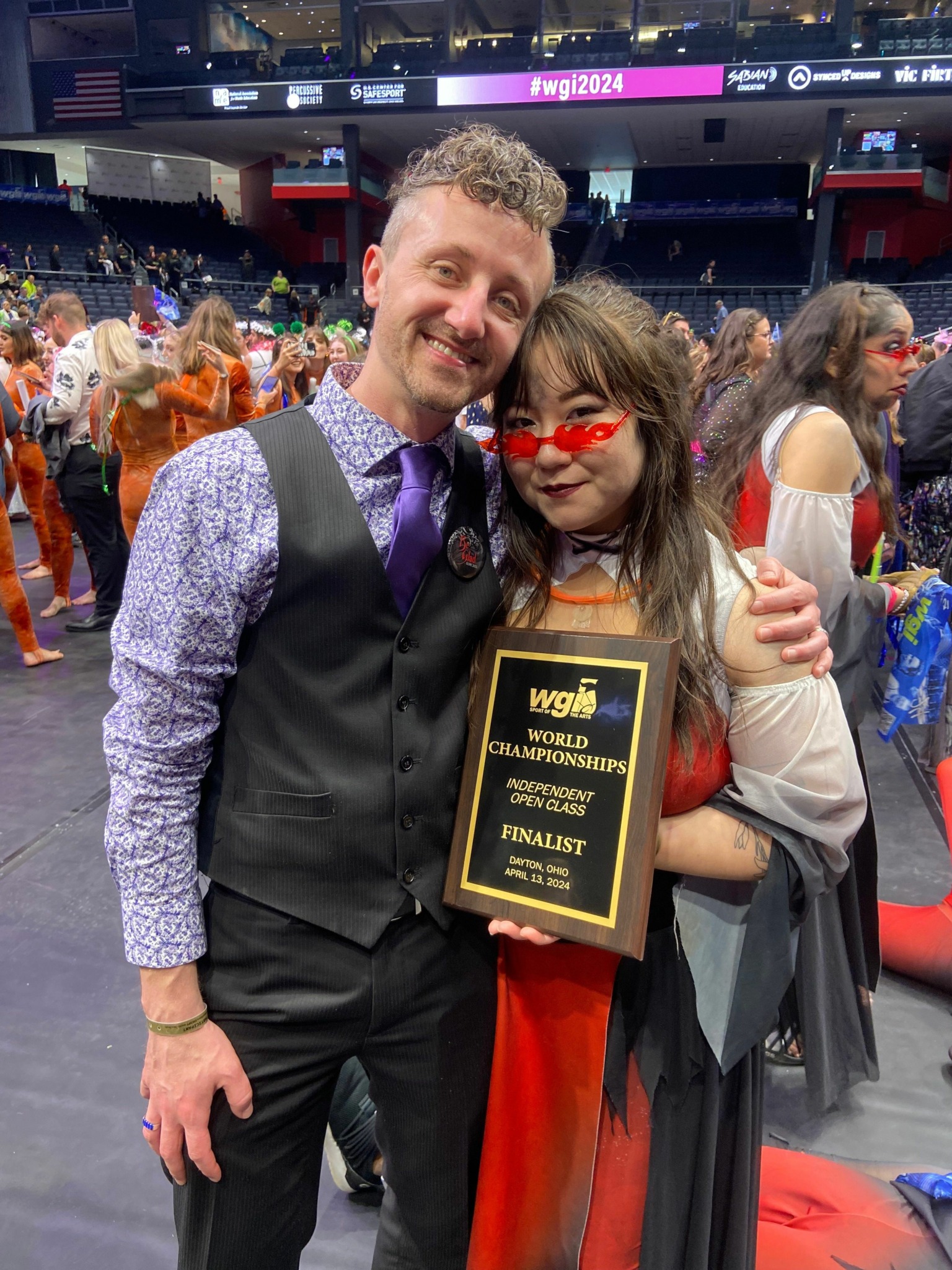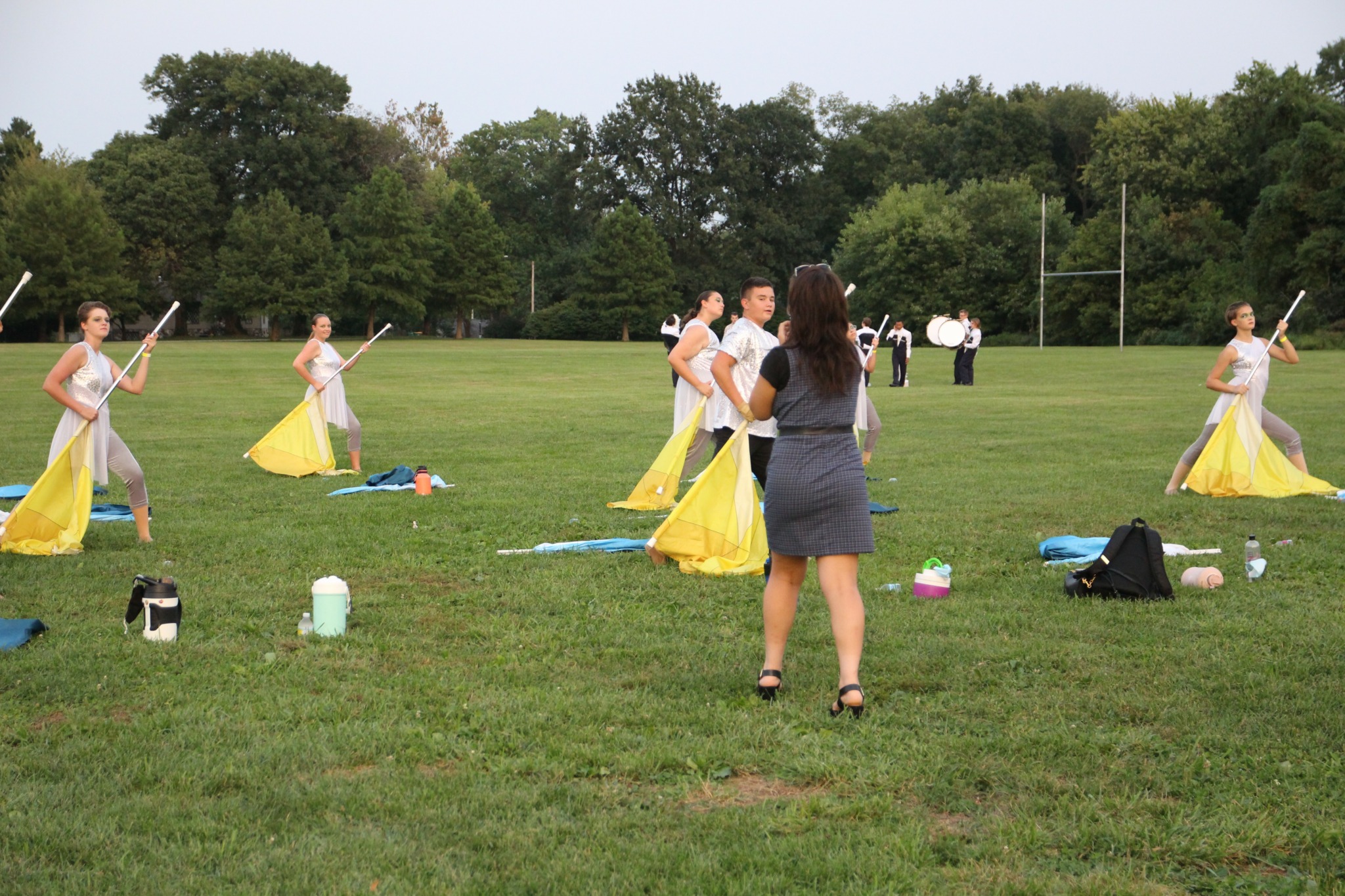We recently connected with Nami Rutherford and have shared our conversation below.
Hi Nami, thanks for joining us today. Are you able to earn a full-time living from your creative work? If so, can you walk us through your journey and how you made it happen?
While I currently work two jobs—full-time as a studio manager at Artists First, a non-profit art studio for people with disabilities, and part-time as development director at La Voûte, a performing arts non-profit—I’ve also experienced a challenging journey toward making a living through creative work. Becoming a full-time artist was never a clear path for me early on. Growing up in a financially struggling family, I had to work multiple jobs from the age of 15 to help support my household. By the time I was ready to pursue an art education, I faced significant financial barriers, which led me to attend community college with a plan to transfer to an art school.
Throughout this period, I continued to perform and teach winter guard, an activity that became a vital outlet for my personal expression, helping me cope with depression and anxiety. Despite the demands of work and school, I remained determined to stay involved in the arts. However, it wasn’t until 2019, after a period of instability with my family, that I had the opportunity to live with my queer high school coach. During this time, he and his husband taught me how to live independently as an adult, which ultimately gave me the confidence to secure my first apartment. This was a pivotal moment for me at 19 years old.
The pandemic further shifted my educational trajectory. Virtual learning lacked the inspiration and direct feedback I craved, and I began to feel disconnected from my artistic goals. In 2021, I found an opportunity at Artists First, initially as a part-time art facilitator. Working with individuals from diverse backgrounds, I found a deeper sense of purpose in community-centered art. Despite juggling multiple jobs and a demanding schedule, my work at Artists First led to a full-time position. It was then that I realized I had managed to secure a full-time role in the arts, without a formal degree, and could now focus solely on creative work.
Looking back, I don’t think I could have sped up the process, as each step taught me something essential about resilience, self-sufficiency, and finding my purpose through art. The key milestones—moving out on my own, finding work at Artists First, and ultimately transitioning to full-time art career—were all necessary for my growth. While I certainly faced obstacles, they shaped me into the artist and professional I am today.


Great, appreciate you sharing that with us. Before we ask you to share more of your insights, can you take a moment to introduce yourself and how you got to where you are today to our readers.
I am an artist, educator, and advocate based in St. Louis. Born and raised in a bicultural household, I am half Japanese and grew up immersed in both Japanese and American cultures. My creative journey began at a young age when I witnessed my mother, who had never identified as an artist, sketching flowers on a McDonald’s receipt. I was fascinated by how she could make something so simple, yet beautiful. This left a lasting impression on me and also taught me that even the simplest of sketches could make someone else feel something.
As I grew up, I felt a deep need to prove myself, partly due to my mixed heritage and the desire for validation in a world that often didn’t understand me. This drive pushed me to not only immerse myself in every art class I could take, but also to join my high school’s color guard, a performing arts sport that offered me both a creative outlet and a sense of belonging.
My experiences as a queer, biracial individual in a world that often sought to define me have shaped my artistic practice and my approach to teaching. I have faced various forms of oppression and struggled with my own identity, but I have channeled these emotions into my creative work. Visual art and performance became essential tools for coping with mental health struggles, and through these mediums, I discovered the power of self-expression. Over time, I’ve come to understand that art is not only a way for me to process my experiences but also a way to change the narrative of who I am and what I represent.
Today, my work centers around creating inclusive, empowering spaces for others, particularly for marginalized individuals. I teach and facilitate art for people with disabilities, youth, veterans, and those facing mental health challenges. My work is not just about making art—it’s about creating a safe environment where others can explore their own identities and express themselves freely. Whether through one-on-one sessions, group workshops, or community art projects, I aim to empower individuals to find their voice and reclaim their narrative.
The ability to blend my personal experiences with my craft to provide a unique and empathetic approach to teaching and creating art is something I have found rewarding. I understand the power of art as both a therapeutic tool and a means of social connection, and I bring this perspective into everything I do. I am most proud of the communities I’ve been able to help build through my work—spaces where people can heal, grow, and connect with others through creativity. I believe that everyone has a story worth sharing, and my mission is to help others discover and tell theirs through art.
My work with Artists First and La Voûte is rooted in a deep commitment to inclusivity, creative self-expression, and empowerment. I feel very grateful that I am able to live a life where I can teach and create in visual and performing arts. A piece of advice that has helped me grow into the artist I am today is: whether you’re looking to explore your creative side, overcome personal challenges, or simply find a space to express yourself, the important aspect you should never lose sight of is staying true to who you are and not what society expects you to be.


What’s a lesson you had to unlearn and what’s the backstory?
I used to believe that being the best at something was the only way to feel truly rewarded. For a long time, I equated success with perfection and validation from others. However, through countless mistakes and experiences, I’ve learned that creating a lasting, meaningful impression with my experiences can be just as impactful, if not more. It’s not about being the best, but about making a genuine connection and leaving something behind that resonates with others. This shift in mindset has been transformative, reminding me that the true value in what I create lies in its authenticity and the emotions it sparks.


Is there a particular goal or mission driving your creative journey?
My creative journey is driven by a desire to evoke genuine emotion in everything I create. Whether through art, design, or storytelling, I aim to make people feel something profound-which could come from being reminded of an emotional memory or spark a new feeling the viewer may not have felt before. Above all, I want my work to help individuals find a sense of belonging, providing them with a space where they feel understood and connected. Ultimately, I feel that my purpose is to create experiences that resonate deeply, fostering both emotional engagement and a shared sense of community.
Contact Info:
- Instagram: tsu.nami
- Facebook: Nami Rutherford
- Linkedin: Nami Rutherford
- Other: Artists First:
www.artistsfirststl.org
IG @artistsfirst stlLa Voûte:
www.lavoutestl.org
IG @lavoutestl


Image Credits
1) Action Shot Photography by Carly Vanderheyden
2) “First Look” legal graffiti with Artists First
3) Action Shot at winter guard regional competition by Belinda Johnson
4) Artists First studio
5) WGI World Championships Independent Open Class Retreat with Brandon Fink(Artistic Director of La Voûte)
6) Original Painting by Nami Rutherford, “Consumption”
7) Action Shot at MCCGA Championships 2020 by Belinda Johnson
8) Contest Warm-Up with Francis Howell Central High School Winter Guard by Deneen Scott
9) 2024 Paint Louis Mural by Artists First


